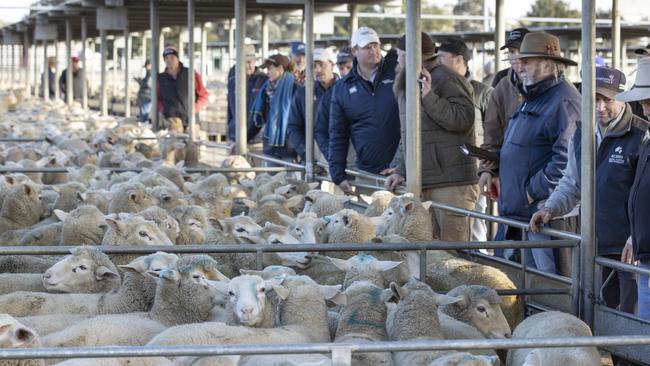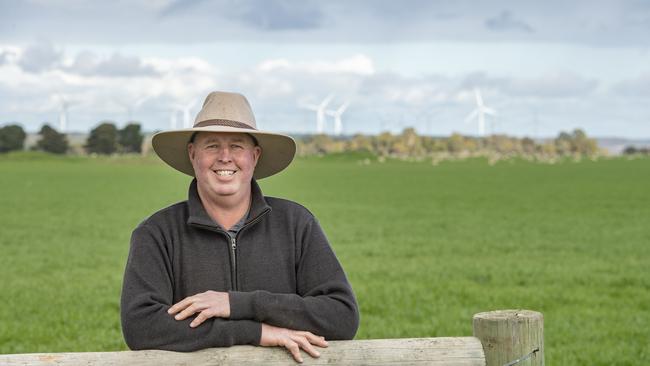800c/kg for lambs here to stay -but there’s a catch
A recent spike in lamb prices has producers rejoicing, but processors are warning there’s a limit to what they can pay.
Lamb prices are on a high – and could stay that way for months as the impacts of a poor season in key production areas flows through and last season’s supplies dry up.
But the spike comes with a caveat, as processors choose to drop kill shifts rather than compete to push prices even higher, arguing they face losing money on lambs bought at the dearer rates.
The much needed fillip to lamb prices has been welcomed by the sheep producing industry, which had suffered months of below cost of production returns.
While bigger yardings have taken the cream off the market in the past few days, prices are still tracking above 800c/kg carcass weight for the best lambs, and hit a top of $288 at Bendigo on Monday.
The Victorian trade lamb indicator closed at 825c/kg carcass weight after Monday’s sales, while the heavy lamb indicator was 865c/kg. Both are more than 60 per cent cent higher than a year ago.
Mecardo analyst Angus Brown said while there was a price ceiling for lambs, processors would still need to secure numbers.
“It looks like they might have to pay up for some time,” Mr Brown said.
He said the peak of lamb prices in 2018 was in the last week of August but this season it could be later.
“Suckers, which traditionally start to flow in September, will likely be delayed and there will be fewer lambs this season in total,” he said.
“It could be nearing mid-November before we see lamb prices below 800c/kg carcass weight again.”

A processor who asked not to be named said his business was losing money at current lamb prices, which were unable to be passed on to his customers, both domestic and export.
The processor said the industry was facing a supply gap, caused by a big sell-off from July to December last year, where 21 per cent more lambs were processed than the five-year average. This had led to a shortage of lambs, which could extend until October.
And while he acknowledged there had been a better margin when lamb prices were lower, his customers “could Google lamb prices in Australia and asked for price discounts”.
“As prices go up, those buyers say they can’t afford to pay now,” the processor said.
“We ourselves will be dropping a (kill) day a week and we are not the only ones, starting this week,” the processor said.
“Yes, I am concerned about lamb supplies and so are others, and I think that will play out in more forward contracts being offered this year compared to last.”
Meat and Livestock Australia figures show two key Victorian selling centres yarded more lambs in the first six months of this year compared to last, pointing to a tightening of numbers over the next few weeks.
MLA data shows Ballarat yarded 679,647 lambs from January to June, 8 per cent more than the same period last year, while Bendigo yarded 7 per cent more lambs.
Victorian Farmers Federation livestock group president Scott Young said no one really knew what would happen to lamb prices from now until spring.
“I’d love to know and it would be great to have a crystal ball,” Mr Young said.
He said the recent lift in lamb prices was very welcome, but producers needed at least 750c/kg carcass weight to be able to stay profitable, and more than 800c/kg during winter when lambs had to be fed to be heavy enough.
And he said with the poor season in key production areas like western Victoria and the likelihood of a surge of unfinished lambs, price signals were needed by processors.
“There needs to be some kind of incentive and contracts for producers to want to buy store lambs to feed them on,” Mr Young said.
“There’s going to be a real challenge ahead if we see a lot of store lambs come onto the market later in spring.”

Poll Dorset breeder, Dane Rowley, Springwaters, Boorowa, NSW, said while many lamb producers had a tough time last year, selling at about $90, now comparable lambs were making $260.
“Right now there is hope things are turning around,” he said.
“I don’t know why things got as bad as they did then, and while we might be having a spike now, I do not think prices will come off like they did last year, and think there is a lot of optimism in the industry now – we are selling so much meat (internationally).”
South Australian Dohne breeder Alex Mattschoss, Barabba, said the current price spike “is nice to see”.
“It is promising, going into the peak spring selling season, the key time for many producers,” Mr Mattschoss said.
“There is a decline in the national flock, so it all comes down to supply and demand.”
Mr Mattschoss said it remained unclear how many well-finished lambs would be available later in the season.
“There are large chunks of southern Australian where producers are busy feeding sheep and it is a bit of an unknown of how many sheep and lambs will be in the good condition that they normally are in spring time,” he said.
Terrick West Poll Merinos principal Ross McGauchie, at Prairie, said Victoria’s lamb turn off was likely to be “a bit slower this year”.
“A lot of Victoria has been short of rain so I think that will set things back and many lambs will be later maturing, so it is likely there will be a shortage of supply in mid to late spring,” Mr McGauchie said.
Meanwhile, Australia exported a record amount of sheep meat in the past financial year of 587,262 tonnes, buoyed by competition from the Middle East and North Africa which took 76 per cent more. Lamb exports to the United States rose 20 per cent to 81,000 tonnes.




